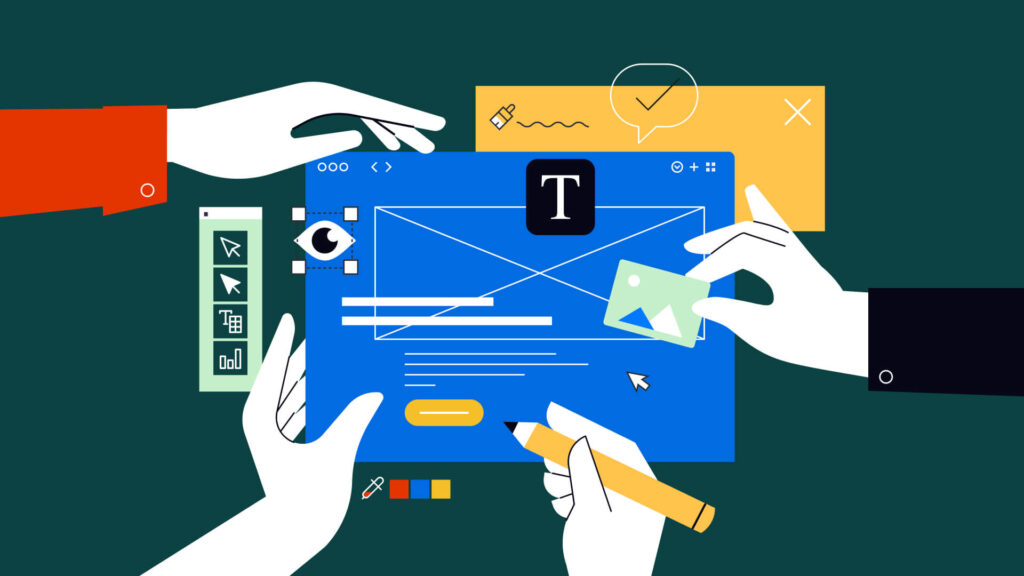Exploring On-Demand Design Services: Key Advantages and Challenges in 2024
Graphic design outsourcing is on the rise
It’s no secret that design is important in business. For websites in particular, a whopping 94% of consumers will leave if the graphic design is bad.
As more companies understand the necessity of visuals, generating high-quality, converting graphic design is moving toward on-demand design subscription models.
Here at Design Force (an on-demand design subscription service, trusted by TikTok), we speak with Design Managers, Marketing Managers, and Creative Directors looking for outsourced graphic design daily.
3 of the biggest challenges they tell us they’re facing are:
- They don’t have enough (or any) in-house designers
Hiring designers in the US is big business, with graphic design jobs growing at a rate of 3% (2021-2031). But with so many designers emerging, comes competitive resumes, time spent interviewing, and hefty annual salaries. Many startups and smaller enterprises simply don’t have the resources to hire effectively, yet need the benefits of high-quality graphic design to scale their brand. Those who do have in-house design teams share that teams have limited or specialized skills – sometimes they need work that’s out of their remit.
- Looking for quality, affordable freelance designers takes a lot of time and energy
Many freelance designers are excellent, but finding those with specific skills, availability and within budget can be time-consuming and stressful. Managers also come up against flexibility restraints and lengthy timelines.
- They have varying design needs throughout the year
Both small and large businesses experience waves of design needs, experiencing too many, or too few projects at any given time. Design Managers and Creative Leads find they end up with overstretched teams (if they have them), or paying for designers who aren’t designing during a lull.
Is outsourced on-demand design worth it? The pros and cons
If you’re thinking about delving into a subscription service to meet your design needs, it’s worth considering the pros and cons to assess whether it’s the right move for your business.
The cons of a subscription-based graphic design service:
- It’s not (always) for one-off projects
Subscription models are just that, a monthly subscription. This means that for a set fee, you have access to the service, and its designers, every month until you cancel. The benefit of on-demand design with Design Force is a 1-2 day turnaround on design assets, but if your business only needs one set of social media graphics for an upcoming campaign, a month’s worth of designers on standby may not be cost-effective. We do offer roll-over hours for those unexpected changes though, as we know things change month to month, so don’t let that put you off.
- AI is changing the landscape
Yes, AI (artificial intelligence) has ventured into the world of design which, naturally, poses a risk to the design industry as a whole. In theory, you could ask AI websites to generate design assets for you. However, the technology has yet to catch up with current demand, meaning the outcome is often clunky and lacking in originality. We believe that the most skilled and intuitive designers and design services will continue to find ways of integrating AI with their systems, increasing the already high-level efficiency of an on-demand model.
- It’ll cost more than one-and-done freelancer sites
It’s hard to compete on cost with freelancer websites offering graphic design work for extremely low fees. But more often than not, the quality of the result from these sites is reflected in the cost, making this route a risky investment.
The pros of a subscription-based graphic design service:
- Design outsourcing is cost-effective
The beauty of a flexible subscription model is that in times of increased need, a team of designers is always available to take on the load within your allotted hours, without additional fees. A fixed monthly rate can take a weight off your shoulders – a set budget avoids dreaded scope creep and secret, unexpected bills.
Plus, with an on-demand team of designers assigned to your business, you pay one fee for access to multiple designers, vetted by a leading agency for quality assurance.
- Flexibility and scalability go hand in hand
One of the biggest draws to on-demand outsourced design is its potential for flexibility. Need more design assets in one month? Great, your assigned Design Manager will find specific designers to meet the need. Want to experiment with animation? Sure, we’ll find you an animator that understands your brand. For one of our biggest clients, overflow design work is a huge pain point that’s been eliminated thanks to our teams, and their reliable, rolling subscription.
Outsourcing design agency teams allows your subscription and design output to scale alongside you. No contracts mean you cancel at any time, but also offers the freedom to increase your plan to include additional hours and/or services as you build your empire.
- Your reliable design team goes from single-skill to multi-skill overnight
Both freelancers and in-house designers come with a barrier: they often specialize in one or two types of design. While this is great when it comes to expert quality, it falls short when you have a multi-faceted design requirement and no qualified designers to pick up the work.
Design outsourcing to an on-demand service gives you a wide variety of design skill at your fingertips, from conversion design to UX/UI design, and packaging design to data visualization and more.
Design subscriptions for businesses: The new way to get design done
Design landscapes are constantly evolving, but we see a move towards on-demand design outsourcing as an efficient, effective route.
With flexible options, knockout work by top-tier creatives and scalable support at a fraction of in-house costs, to us, it’s a no-brainer.
But if you’re unsure of how a business design subscription could work for your specific need, our experts will gladly walk you through it. Book a free demo to see if we can break through your design roadblocks together.



